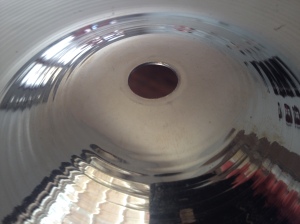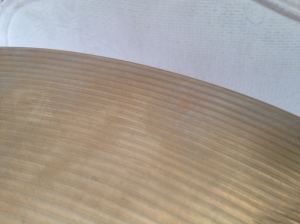Let us take a moment to reflect on your last experience at your local big box instrument retailer. How did they treat you? Did you feel comfortable in their store? Did you feel comfortable that the sound you were chasing was somewhere in that store? Did you feel confident in the salesperson’s knowledge about the instrument you play and the various brands that can help you create your musical voice? Or did they just show you what was on the showroom floor because that’s what they had and so that’s what they tried to sell you?
 Throughout my 25-year career with drums, I’ve found that very often I was mislead by my local salesperson – not because they wanted to trick me or “pull one over” on me – but because they were limited by the resources and inventory made available to them. I honestly believe that these salespeople want to sell you something that you will love – but they can’t sell you what they don’t have. And that’s where buying used instruments comes into our lives.
Throughout my 25-year career with drums, I’ve found that very often I was mislead by my local salesperson – not because they wanted to trick me or “pull one over” on me – but because they were limited by the resources and inventory made available to them. I honestly believe that these salespeople want to sell you something that you will love – but they can’t sell you what they don’t have. And that’s where buying used instruments comes into our lives.
Today’s manufacturers are making some really great products, but they’re also a business looking to generate revenue and make a profit. And that means that while they strive to produce exceptional products that musicians love – which they quite often do – they too, are equally concerned and limited by rising input costs the world-over.
As an example, twenty years ago my favorite cymbal manufacturer produced a line of cymbals that [today] is tremendously sought-after. These are the famous Early American K’s. What makes these cymbals so unique and special is the process that went into producing these wonderful instruments. Labor costs were lower, machinery was less sophisticated, and therefore these cymbals were Hand Made! (yes, I capitalized hand made because it’s that important!)
Today’s Zildjian K line is fantastic – there is no doubt about it. But, something has been lost by the invention and introduction of modern machinery and techniques in today’s instrument manufacturing world. This is one the reasons why buying used or out of production items is so fantastic – because you get genuine, hand-made equipment that is unrivaled by today’s standards.
So now that we’ve touched upon quality, let’s talk about price.
There are a number of ways to skin a cat – you can buy that cymbal that you’ve been dying for, or, if you’re newer in the game, you can get a much greater quality instrument with the same budget as if you went to “Guitar World”.
Generally speaking, you can expect to pay about 25-50% less for a used instrument than a brand new one. And when you know what to look for in a used instrument and can acquire it for much less than anywhere else, it makes the buying process that much more enjoyable.
One of the facets that makes Drum Exchange so unique is that we categorize every instrument listed on our marketplace by genre and skill-level. We do this to help you properly select the instrument for your preferred playing style and skill level, which we hope will ultimately increase the likelihood of satisfaction when you take that next instrument out of the box.
So before you take that drive to your local instrument store, check our buyer resources and marketplace for exceptional second-hand gear. We might just have what you’re looking for.
About the author
This post was written by Judah Parness. Judah has been playing drums for over 25 years and is the Founder & CEO of Drum Exchange, a premier online marketplace to buy and sell used, vintage and out of production musical instruments.


